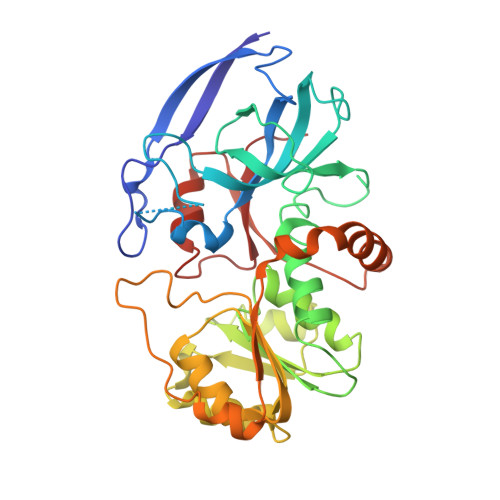Mechanistic and structural studies of apoform, binary, and ternary complexes of the Arabidopsis alkenal double bond reductase At5g16970.
Youn, B., Kim, S.J., Moinuddin, S.G., Lee, C., Bedgar, D.L., Harper, A.R., Davin, L.B., Lewis, N.G., Kang, C.(2006) J Biological Chem 281: 40076-40088
- PubMed: 17028190
- DOI: https://doi.org/10.1074/jbc.M605900200
- Primary Citation of Related Structures:
2J3H, 2J3I, 2J3J, 2J3K - PubMed Abstract:
In this study, we determined the crystal structures of the apoform, binary, and ternary complexes of the Arabidopsis alkenal double bond reductase encoded by At5g16970. This protein, one of 11 homologues in Arabidopsis thaliana, is most closely related to the Pinus taeda phenylpropenal double bond reductase, involved in, for example, heartwood formation. Both enzymes also have essential roles in plant defense, and can function by catalyzing the reduction of the 7-8-double bond of phenylpropanal substrates, such as p-coumaryl and coniferyl aldehydes in vitro. At5g16970 is also capable of reducing toxic substrates with the same alkenal functionality, such as 4-hydroxy-(2E)-nonenal. The overall fold of At5g16970 is similar to that of the zinc-independent medium chain dehydrogenase/reductase superfamily, the members of which have two domains and are dimeric in nature, i.e. in contrast to their original classification as being zinc-containing oxidoreductases. As provisionally anticipated from the kinetic data, the shape of the binding pocket can readily accommodate p-coumaryl aldehyde, coniferyl aldehyde, 4-hydroxy-(2E)-nonenal, and 2-alkenals. However, the enzyme kinetic data among these potential substrates differ, favoring p-coumaryl aldehyde. Tyr-260 is provisionally proposed to function as a general acid/base for hydride transfer. A catalytic mechanism for this reduction, and its applicability to related important detoxification mammalian proteins, is also proposed.
- School of Molecular Biosciences, Washington State University, Pullman, Washington 99164-4660, USA.
Organizational Affiliation:


















